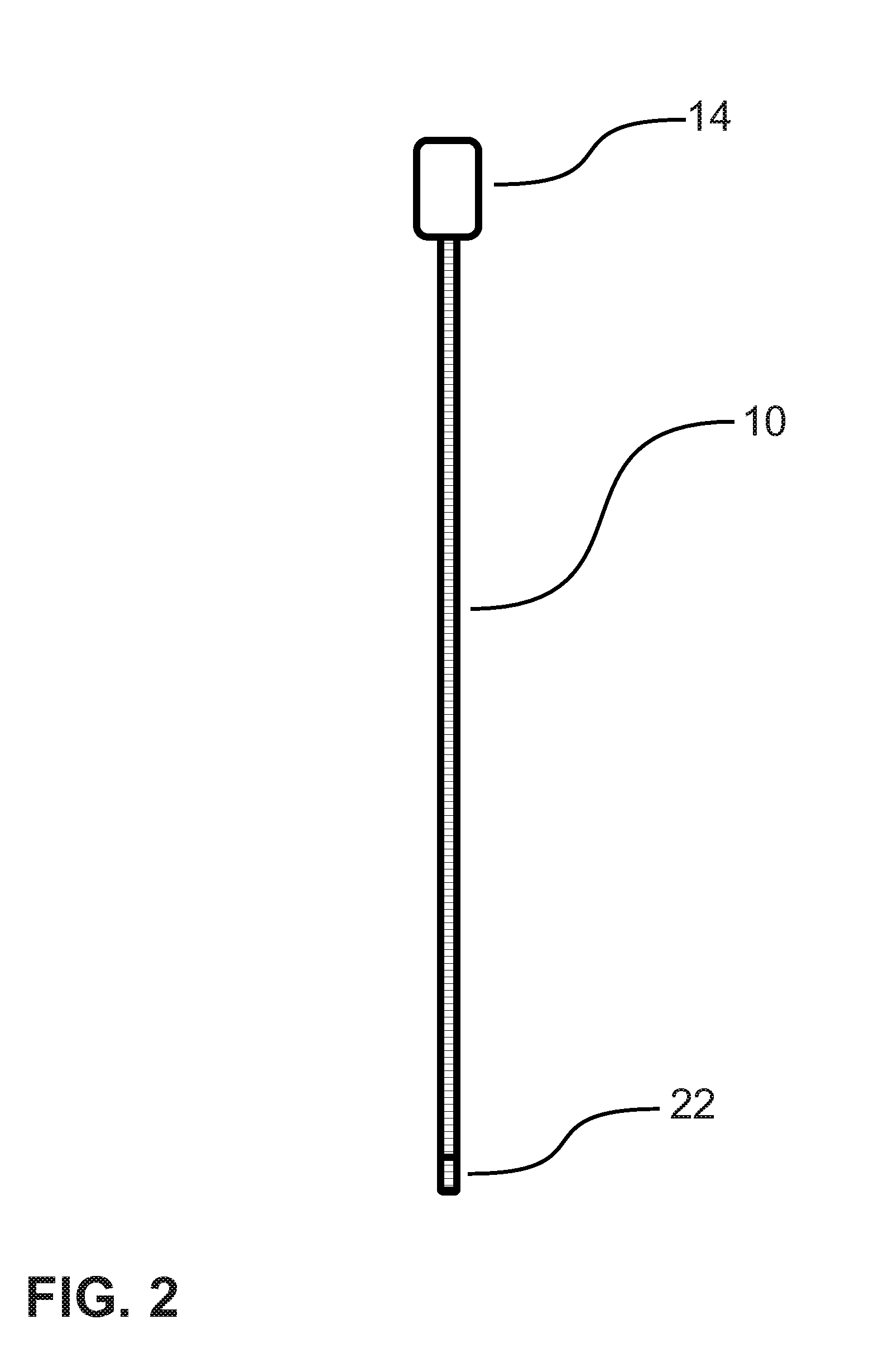System and method for inserting intracranial catheters
a system and catheter technology, applied in the field of system and method for inserting intracranial catheters, can solve the problems of occupying a lot of floor space, affecting the safety of patients, so as to reduce the complexity of the system and avoid damage to blood vessels
- Summary
- Abstract
- Description
- Claims
- Application Information
AI Technical Summary
Benefits of technology
Problems solved by technology
Method used
Image
Examples
first embodiment
[0034]FIG. 2 shows the catheter 10 drawn to scale. In the first embodiment, the catheter 10 has an inner diameter of 2.5 mm and is manufactured out of a, surgically safe material, e.g., polyurethane. If the material out of which the catheter 10 is manufactured is not sufficiently stiff to allow it to pushed into the brain's soft matter, then a metal stylus can be inserted in the drain 28 (see FIG. 3) to provide the required stiffness. The stylus can be removed once the insertion procedure is over to allow the CSF to flow.
[0035]The catheter 10 has equally spaced markings running from the distal end to the proximal end. As will be explained later, these provide a means for determining the depth of insertion of the catheter 10, i.e., the distance of the catheter's distal end 22 from the burr hole 20. In the first embodiment it is contemplated to put depth markings every millimeter, but other intervals as well as other means of determining the depth of insertion are possible.
[0036]Built...
second embodiment
[0053]Accordingly the reader will see that the embodiments described above provides a number of evident advantages:[0054](a) The synergistic effect of combining the signals from the video camera, with those from the ultrasonic transducer and the IMU enables the creation of a novel, intelligent guidance system that reduces the likelihood of excess hemorrhaging, while increasing the accuracy of final placement.[0055](b) The use of an in vivo video camera in the catheter's distal end simplifies the overall system design compared to fiber optic cameras.[0056](c) The use of an IMU together with the algorithm described in FIG. 9 comprises a means for the system to record the path taken by the catheter en route to the desired location. Information which is invaluable for post-operative diagnostics and treatment.[0057](d) The use of a portable PC allows the entire system to be carried into the ICU when needed and carried out again when no longer required. Furthermore, the second embodiment ...
PUM
 Login to View More
Login to View More Abstract
Description
Claims
Application Information
 Login to View More
Login to View More - R&D
- Intellectual Property
- Life Sciences
- Materials
- Tech Scout
- Unparalleled Data Quality
- Higher Quality Content
- 60% Fewer Hallucinations
Browse by: Latest US Patents, China's latest patents, Technical Efficacy Thesaurus, Application Domain, Technology Topic, Popular Technical Reports.
© 2025 PatSnap. All rights reserved.Legal|Privacy policy|Modern Slavery Act Transparency Statement|Sitemap|About US| Contact US: help@patsnap.com



